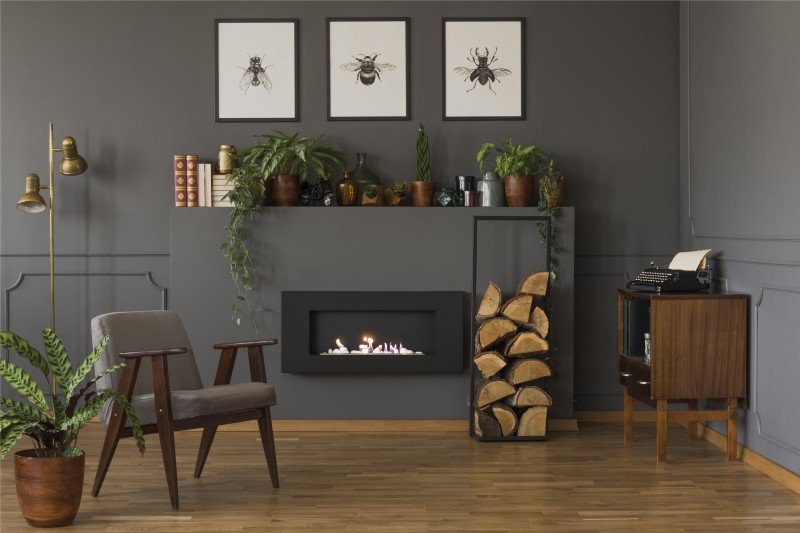Fireplaces in the UK: A Comprehensive Guide
Fireplaces have actually long been an important part of British homes, providing both visual beauty and functional warmth. As simply click the up coming article turns chilly, the attraction of a cozy fire beckons, transforming any living space into a sanctuary. In Fireplaces UK , we will check out the different kinds of fireplaces available in the UK, factors to consider for setup, upkeep tips, and answers to regularly asked questions about fireplaces.
Types of Fireplaces
When choosing a fireplace for a UK home, a number of alternatives are available, each with unique functions and benefits. The following table sums up the main types of fireplaces popular in the UK:
| Fireplace Type | Description | Pros | Cons |
|---|---|---|---|
| Open Hearth | Traditional fireplaces that burn wood or coal, offering a rustic feel. | Genuine ambiance; great heat circulation | Less energy-efficient; requires chimney upkeep |
| Gas Fireplaces | Usage natural gas or lp; can be direct vent or ventless. | Instantaneous heat; simple to operate; cleaner burning | Preliminary setup cost; may require gas line |
| Electric Fireplaces | Imitate a flame utilizing LED lights and offer heat through electrical power. | Safe; easy to set up; no flue required | Less genuine; greater operating expenses |
| Wood-burning Stoves | Closed-system fireplaces that burn logs, offering high performance. | High heat output; eco-friendly when utilizing sustainable wood | Minimal visual compared to open hearth |
| Bioethanol Fireplaces | Environmentally friendly alternative that burns bioethanol, developing genuine flames. | No chimney required; flexible style choices | Can be expensive to operate; minimal heat output |
Benefits and drawbacks of Each Type
Open Hearth
- Pros:
- Provides character to any living space.
- Effective heat circulation due to open flames.
- Cons:
- Less energy-efficient and more smoke than modern alternatives.
- Requires regular cleansing and upkeep of the chimney.
Gas Fireplaces
- Pros:
- Easy to manage and operate with the flick of a switch.
- Cleaner alternative with less soot buildup.
- Cons:
- Requires a gas supply and setup expenses can be high.
- May not provide the same ambiance as a traditional fire.
Electric Fireplaces
- Pros:
- Simple setup without any chimney or flue required.
- Comes in various designs, resembling traditional options.
- Cons:
- Lacks the realism of genuine flames and can end up being expensive with constant use.
Wood-burning Stoves
- Pros:
- Highly effective and creates substantial warmth.
- Eco-friendly resource when using properly sourced wood.
- Cons:
- Requires extra space for log storage and regular upkeep.
Bioethanol Fireplaces
- Pros:
- Flexible placement due to no need for traditional venting.
- Clean-burning and very little effect on indoor air quality.
- Cons:
- Can be less affordable for consistent usage compared to gas or wood.
- Heat output is less efficient for larger spaces.
Setup Considerations
When installing a fireplace in a UK home, several factors should be considered:
- Building Regulations: Ensure compliance with regional building regulations and safety guidelines.
- Chimney and Flue: Determine the requirement for a chimney or flue system based on the type of fireplace picked.
- Ventilation: Proper ventilation is essential for security, specifically with gas, wood, and bioethanol choices.
- Area: Consider the best location for the fireplace to take full advantage of heat distribution and aesthetic appeal.
- Professional Help: Engaging a professional installer can guarantee a safe and precise setup tailored to the specific kind of fireplace.
Upkeep Tips
Regular upkeep of a fireplace is important for both safety and effectiveness. Follow these standards to keep your fireplace in peak condition:
- Chimney Sweeping: Have your chimney expertly swept at least as soon as a year to avoid clogs and minimize fire danger.
- Examine for Damage: Regularly look for leaks, fractures, or damage, particularly in gas and wood-burning fireplaces.
- Clean the Surroundings: Ensure the area around the fireplace is totally free from dust and combustible materials.
- Check Carbon Monoxide Detectors: Test detectors regularly, especially in homes with gas-burning devices.
- Shop Wood Properly: If using a wood-burning range, store wood in a dry location to decrease wetness material.
Often Asked Questions
What is the very best type of fireplace for a small room?
For small areas, electric fireplaces or bioethanol designs are typically suggested due to their smaller sized size, security functions, and aesthetics.
Are electric fireplaces cheaper to run than gas?
Electric fireplaces generally have a lower upfront expense, but depending on electricity rates, they can be more expensive to run long term compared to gas.
Do wood-burning stoves require a great deal of maintenance?
While they do need some upkeep, such as cleansing and regular chimney sweeps, numerous house owners discover that modern wood-burning ranges are efficient and reasonably low upkeep compared to traditional open hearths.
Can I set up a gas fireplace myself?
While some homeowners might try DIY installation, it is highly advisable to employ a professional for gas fireplace installations due to security concerns and regulative compliance.
How can I optimize the heat output of my fireplace?
To maximize heat output from any fireplace, consider the following:
- Keep windows and doors closed during usage.
- Use heat-efficient logs or fuels.
- Guarantee correct airflow around the fire.
- Make use of fans or blowers that can circulate warm air throughout the room.
Fireplaces stay a treasured component within UK homes, providing warmth, charm, and an inviting environment. Provided the variety of choices and their unique features, house owners can select the best fireplace to complement their home while making sure security and efficiency. With simply click the up coming article and a clear understanding of the installation requirements, anybody can delight in the charm and comfort of a fireplace for years to come.

